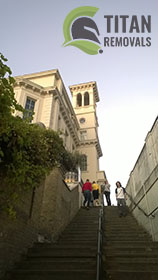England is home to numerous UNESCO World Heritage Sites which everybody should aspire to visit and experience in person.
Tower of London – Recognised by UNESCO in 1988, the Tower of London is one of the city’s most distinguishable structures and visited landmarks. The oldest part of the site, the White Tower was built by William the Conqueror during the late 11th century. Since then the fortress has been the subject of several alterations. Throughout the years it has been used for various purposes and today is one of Europe’s most interesting and well-known museums. It houses the Crown Jewels and is visited by over three million people on a yearly basis.
 Kew Gardens – Kew Gardens is home to the world’s largest collection of living plants. It was established in 1840 and currently covers an area of 300 acres of greenery. It was listed as a World Heritage Site in 2003 and is currently visited by an estimate of 1.5 million travelers per year. The site is home to the following plant houses:
Kew Gardens – Kew Gardens is home to the world’s largest collection of living plants. It was established in 1840 and currently covers an area of 300 acres of greenery. It was listed as a World Heritage Site in 2003 and is currently visited by an estimate of 1.5 million travelers per year. The site is home to the following plant houses:
- Alpine House
- Palm House
- The Orangery
- The Nash Conservatory
- Temperate House
- Waterlily House
- The Princess of Wales Conservatory
Kew Gardens is also the location of several ornamental edifices and structure which will undoubtedly impress you. So if your removal to London was successful you can take the day off and visit this astonishing garden.
Durham Cathedral – The English capital isn’t the only city that is home to World Heritage Sites. As the name suggest this marvelous religious edifice is located in the northern city of Durham. The construction of the cathedral began in 1093 and ended four decades later in 1133. Its central tower is 66 metres tall while the western towers are 44 metres tall. The building is built in the Romanesque architectural style and is credited to be one of Britain’s most beautiful religious structures. It was acknowledged by UNESCO in 1986 and is today on of England’s most recognisable landmarks. So, if you have never been to Durham, you can use your tiredness from your recent domestic removal as an excuse for a road trip and take the weekend to explore the city and visit this mesmerising cathedral.
Fountains Abbey – Built during the first half of the 12th century, today Fountains Abbey is one of the largest and best preserved ruinous Cistercian monasteries in England. It lies in close proximity to the city of Ripon in the county of North Yorkshire. The abbey functioned for over four centuries and was abandoned in 1539, when King Henry VIII decided to dissolute all Catholic structures in the United Kingdom. In present day the monastery is owned by the National Trust and is listed as a Grade I edifice. It became a UNESCO World Heritage Site in 1986.
Derwent Valley Mills – Located along the River Derwent this complex of industrial buildings dates back to the 17th and 18th century. It was designated as a World Heritage Site in 2001 and is currently visited by numerous local and foreign vacationers on a daily basis. The Derwent Valley Mills are also the location of several listed edifices and Scheduled Monuments.
